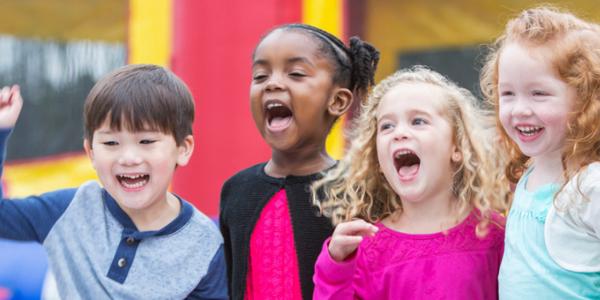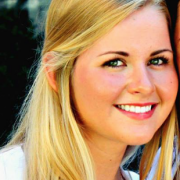Planes, Trains, Cars, and Bikes: Preschoolers Study Transportation

You are here
Two NAEYC interns, Caroline Cummings and Lena Salzbank, had the opportunity to observe a preschool classroom and join the class on a field trip to a local airport. This peek into an engaging learning environment shows developmentally appropriate practice in action in an NAEYC-accredited program.
Does your program or classroom have a developmentally appropriate learning story you’d like to share? Visit www.naeyc.org/writeTYC to submit an article idea.
At the University of Maryland’s Center for Young Children, the 3-, 4-, and 5-year-olds in the Orange Room are building on what they already know about transportation. The children and their teacher, Alison, explore this topic both inside and outside the classroom.
Choosing a topic of learning
“We selected transportation because of the children’s interest in vehicles and their prior knowledge about the subject,” Alison says. “Most children in the class own a bike—or a parent does—and all the families use a car as their main mode of transportation. And trains and planes are very interesting to children this age.”
The children don’t just read about planes, trains, cars, and bikes in the classroom—they see them during interactive field trips. The visits include:
- A bike repair shop, where the children see different types of bikes and learn what tools are used to fix broken bikes
- A car junkyard, where the children learn how car parts are recycled and reused
- A subway train ride, where the children experience buying and using tickets and riding on a train
- A train station, where the children draw pictures of the station and tracks
- An airport, where they see a small plane take off and land, and explore the plane on the ground
During one of Caroline and Lena’s visits to the Orange Room, the children are reading books about race cars and other vehicles, including a class favorite—Steam Train, Dream Train (2013), by Sherri Duskey Rinker and Tom Lichtenheld. The children read and discuss the types of cars on the train found in the book. They watch videos about trains and airplanes, and they make paper airplanes. Throughout the study, teachers and children use various resources and activities to expand their experiences.
Teachers encourage the children to identify people and jobs in their community and to think about the skills required to perform the jobs. The children act out these roles in dramatic play, and create roads and bridges out of blocks. Wearing helmets, they ride bikes they also built together with blocks.
Expanding knowledge
Before the field trip to a nearby airport, Alison asks the children what they know about airplanes. Here are some of their responses:
“They can fly.”
“Airplanes have wheels that they can land on.”
“Airplanes can take you places.”
“Rescue helicopters save people.”
“They have wings that make them fly.”
“Airplanes fly in the clouds.”
Children usually have a broad understanding of transportation before they learn about it in the classroom. It’s important for teachers to acknowledge what children know and help to fill in the gaps in their knowledge.
After field trips, the children sit in a circle to talk about their experiences. Children’s self-confidence is enhanced when they use new vocabulary words, such as air pump and brakes during the bike portion of the study. They learn to listen and they gain deeper understanding from other children’s accounts. Teachers ask the children to bring in photos of their bikes to share with the class.
Involving parents
Parents and families are essential to a child’s learning. Families like to stay informed about what goes on in the classroom—the types of lessons and topics their children are learning about—so they can expand on these at home. Alison emails a weekly lesson plan to parents, outlining the topics and related activities for the coming week. For the transportation unit, for example, she spends a week on each method of transportation. The teachers keep a message board listing the classroom activities for the day in the front of the classroom for parents and children to read together at morning drop-off. Parents can also see a display of the children’s work on current lessons.
Photo © iStock
Caroline Cummings is a Broadcast Journalism student at the University of Maryland, College Park. She worked as an intern at NAEYC during the summer of 2015.

Lena Salzbank is a Broadcast Journalism student at the University of Maryland, College Park. She worked as an intern at NAEYC during the summer of 2015.
Alison Hurst is a teacher at the Center for Young Children at the University of Maryland, College Park.